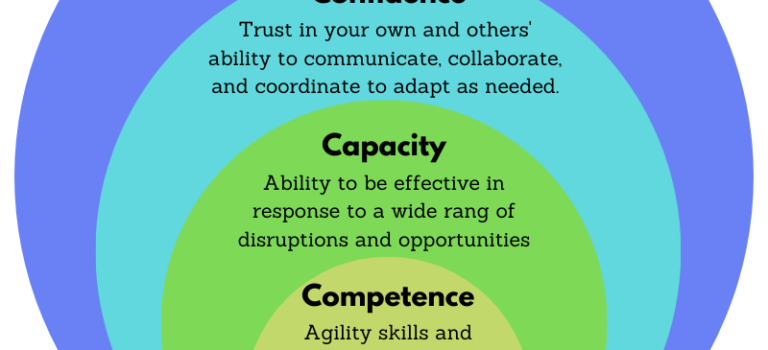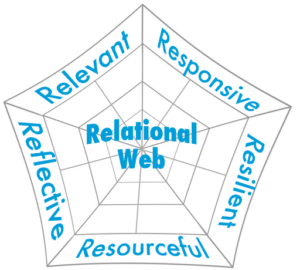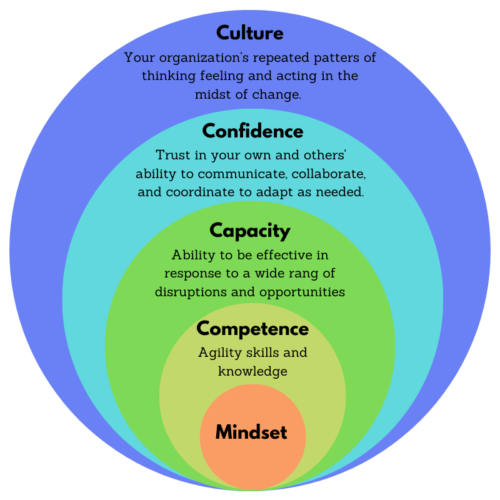
Or Agile 101 for Smarties
Business agility and agile methodology have long surpassed any danger of being labeled flavor-of-the-month business trends. While various approaches pre-date it, The Agile Manifesto published in 2001 is credited with igniting the trend (beginning with, and now expanding beyond software development) toward project management approaches and business strategies designed for rapid innovation and adaptation.
Organizations across industries and around the globe are adopting agile frameworks to increase revenue, reduce costs, and time to market while minimizing risk and maximizing value.
Studies estimate that upwards of 75% of organizations are currently using or soon plan to adopt agile at some level (Freeform Dynamics, 2018).
These trends don’t mean that agile is right for every project. Sometimes more traditional waterfall project management is best, especially if your project(s) is clearly defined, fairly routine and has minimal chance of new discoveries or changes along the way. There is also a robust debate about whether or not it is viable to combine agile and waterfall as a hybrid approach. Nonetheless, chances are good that you or your organization are using an agile methodology, such as Scrum or Kanban, in at least one of your teams. Perhaps you have been asked to join a Scrum team or take on some other role in an agile team.
Your company may be in the midst of an agile or digital transformation, and you hear terms like SAfe® or enterprise agility. Or, maybe you simply understand that to stay competitive in your industry, responsive to your customer needs, and a rapidly changing marketplace, you, your team, and entire organization need to be more agile.
 Because I have been working with leaders, teams, and organizations across industries that fall into each of these categories in recent years, and am frequently asked to distinguish between various agility terms and approaches, I have written this series of articles on the topic to help you distinguish between overall organizational agility dynamics and practices, and specific agile methodologies and frameworks so that you can begin to determine which might be right for you.
Because I have been working with leaders, teams, and organizations across industries that fall into each of these categories in recent years, and am frequently asked to distinguish between various agility terms and approaches, I have written this series of articles on the topic to help you distinguish between overall organizational agility dynamics and practices, and specific agile methodologies and frameworks so that you can begin to determine which might be right for you.
This series is not intended as an in-depth discussion of each approach, however, throughout each post, you will find links to additional detail that may be helpful in your exploration.
My intention is to provide leaders at all levels of the organization a broad view of the approaches that organizations across industries are using, to call out some of their critical success factors potential pitfalls that are often overlooked in the initial burst of enthusiasm.
With this big picture in view, my goal is to save you time, money and heartache and set you up for a wildly successful agility shift.
Agility vs Agile Frameworks and Agile Methodologies
In this first post in the series, I will provide a very high-level description of some of the approaches that agile project teams are using to improve their processes and results.
I will go into much more detail on the topic of business agility in Part 3 of this series. Broadly, I view agility with an understanding that organizations are human systems of interaction. This means that we make sense of what is going on and get things done with and through other people. A humanistic understanding of business agility points not to a dictionary definition, but to a competence statement:
Agility is your ability to respond effectively to the unexpected and unplanned and quickly turn challenges into opportunities (The Agility Shift, 2015).
The individual, team and organizational capacities required to develop and sustain this competence require continuous attention and are the foundation for the successful implementation of the agile approaches I overview in this post. Rather than think of business agility and agile frameworks and methodologies as separate, they are interdependent.
What is the Difference Between Scrum, Lean, and Design Thinking?
Many agilists (people who embrace agile principles and practices or a specific agile approach) are fond of saying that “there is no agile methodology,” only agile frameworks that provide concepts and guidelines for improved project management and delivery.
In practice, most agile teams settle on and adopt a specific methodology. From here on out, I will refer to these as methodologies, recognizing that each approach is intended as a set of guiding principles and practices that can (and should) be adapted and refined to fit your needs.
Whether you are practicing Scrum (by far the most common agile methodology), Kanban, Crystal, XP or others (see brief descriptions of several methodologies here), agile methodologies share the same goal: to minimize risk and maximize value.

Sample Scrum Overview
Agile methodologies, as practiced today, began in manufacturing, were modified in software
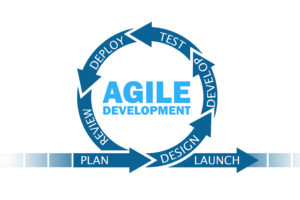
The Cycle of Agile Software Development
development, and are now used widely across domains for everything from new product development, marketing, event planning, learning and development, and R & D, to name just a few.
Regardless of the focus, agile methodologies center around rapid prototyping cycles (often called sprints) with each iteration focusing on delivering the highest value aspects of the project for inspection and adaptation.
In close collaboration with the end-user or other key stakeholders, agile teams quickly receive feedback that they use to inform planning and priorities for the next cycle.
When You Should Consider an Agile Methodology
Agile methodologies are ideal for complex projects where discoveries are likely to be made at each iteration, and requirements are likely to change as other new information becomes available.
Changing requirements and new learning are why IT projects are now almost exclusively developed using agile today. The exponential growth in agile is due to the realization that any complex project can benefit from an agile approach, such as marketing campaigns, change management, mergers and acquisitions, even family life.
 Critical Success Factors: There is a significant learning curve associated with adopting and implementing an agile methodology. It takes time to build what I call the Three Cs of the Agility Shift: Competence, Capacity, and Confidence. Before embarking on this learning curve, ask yourself:
Critical Success Factors: There is a significant learning curve associated with adopting and implementing an agile methodology. It takes time to build what I call the Three Cs of the Agility Shift: Competence, Capacity, and Confidence. Before embarking on this learning curve, ask yourself:
- “Do we have the commitment, resources, and patience to progress from novices to experts?”
- “Do we have leadership buy-in and support?”
- “Do we understand and have the willingness to make the mindset shift necessary for this new way of working to thrive?”
If the answer is yes to these questions, I highly recommend you and as many of your colleagues as possible start, as I did, by getting your ScrumMaster® Certification or share another immersive learning experience to become familiar with your agile methodology of choice.
Lean
 In the same eco-system as agile methodologies, Lean approaches are designed to maximize customer value and minimize waste. While most strongly associated with its manufacturing roots,
In the same eco-system as agile methodologies, Lean approaches are designed to maximize customer value and minimize waste. While most strongly associated with its manufacturing roots,
Lean is also used in service delivery. As its name implies, the goal is to create the leanest, or most cost-effective value chain through experimentation and testing, to discover or refine standardized processes. Organizations from healthcare to consulting are adopting the principles and practices of lean.
When You Should Consider Lean
With its focus on cost and waste reduction, as well as efficiency, lean can be particularly useful 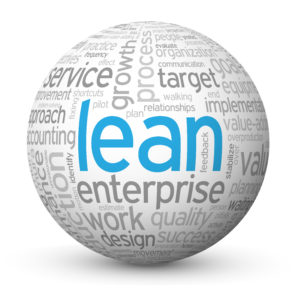 for systems and processes that are relatively routine and include many moving parts.
for systems and processes that are relatively routine and include many moving parts.
 Critical Success Factors: Focusing solely on cost reduction and efficiency at the expense of continuous learning and innovation, which are processes that can be inherently messy. Meeting time and budget goals can lead to something called “technical debt,” a concept rooted in software development that applies more broadly.
Critical Success Factors: Focusing solely on cost reduction and efficiency at the expense of continuous learning and innovation, which are processes that can be inherently messy. Meeting time and budget goals can lead to something called “technical debt,” a concept rooted in software development that applies more broadly.
It is a “debt” that is incurred when a team chooses an expedient but flawed solution that has to be paid, usually with interest, at a later date when the overlooked problem is even bigger and more expensive to solve.
Design Thinking
With many of the characteristics of agile methodology, design thinking, or human-centered design (HCD), might also be worth your consideration. While agile is considered a project management approach, design thinking is geared toward problem framing and solving (or alternatively, opportunity finding and exploiting). The human experience is central in both agile and design thinking.
Agilists often start by understanding the user experience and translating those experiences into user stories which include a statement of a user experience that needs to be improved; while design thinking teams start with empathizing with the person(s) who have the problem they have identified and craft user statements as their starting point to generate innovative solutions.
The most common design thinking framework includes the stages in the graphic below, with the understanding that there is no one right way to execute each phase. Tim Frick and Emily Lonigro, CEOs of their respective Chicago-based digital media companies, Mightybytes and LimeRed, have written an excellent article that details two business examples of how they have applied design thinking and HCD in their businesses. Lest you think design thinking is exclusively for creative businesses, check out how global logistics company UPS regularly applies the approach to identify and solve customer problems, reporting: “We can’t emphasize enough the importance of rapid prototyping, testing with real customers and iterating or even pivoting based on those learnings.”
Design Thinking Overview
When You Should Consider Design Thinking
 Design thinking and HCD are especially useful when you have a complex situation with many stakeholders and need a process to clarify the problem or opportunity by engaging many perspectives. It is also excellent when innovation is your top priority.While not the originators of design thinking (here is an excellent history) IDEO has become a leader in applying and teaching the process for new product and service development as well as for humanizing, simplifying, and solving complex organizational and social issues.
Design thinking and HCD are especially useful when you have a complex situation with many stakeholders and need a process to clarify the problem or opportunity by engaging many perspectives. It is also excellent when innovation is your top priority.While not the originators of design thinking (here is an excellent history) IDEO has become a leader in applying and teaching the process for new product and service development as well as for humanizing, simplifying, and solving complex organizational and social issues.
 Critical Success Factors: Design thinking is a highly participatory approach, and to do it well, you need to make time and space to engage multiple perspectives, experiences, and voices of those who have or are touched by the issue.
Critical Success Factors: Design thinking is a highly participatory approach, and to do it well, you need to make time and space to engage multiple perspectives, experiences, and voices of those who have or are touched by the issue.
It may be tempting to leapfrog over or truncate this stage in the interest of saving time and money, but doing so will undermine the essence of the process: the humans at the center of HCD. These diverse experiences and perspectives provide valuable insight to spur innovation; they can also disrupt your assumptions about the issue.
Do not start a design thinking process if you are already attached to your preconceived ideas; DO start the process if you are willing to listen and be surprised by what you discover.
Once they have experimented with and adopted agile methodologies in one or more areas and begun realizing the benefits, many organizations begin to scale these approaches across the enterprise. In Part 2 of this series Agile 101: Enterprise Agility Strategies, I overview the most common approaches and pitfalls of enterprise agility.
Are You Ready to Make The Agility Shift?
Pamela Meyer, Ph.D., is the author of The Agility Shift: Creating Agile and Effective Leaders, Teams and Organizations. As president of Meyer Agile Innovation, Inc. she is a sought-after keynote speaker and works with agile teams, as well as leaders across industries who need innovative learning and talent development strategies to make the mindset and business shift to compete in a rapidly changing marketplace.


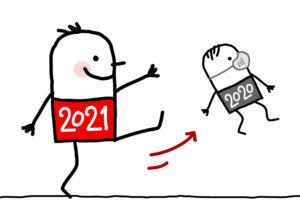





 In the same eco-system as agile methodologies,
In the same eco-system as agile methodologies,  for systems and processes that are relatively routine and include many moving parts.
for systems and processes that are relatively routine and include many moving parts.  Design thinking and HCD are especially useful when you have a complex situation with many stakeholders and need a process to clarify the problem or opportunity by engaging many perspectives.
Design thinking and HCD are especially useful when you have a complex situation with many stakeholders and need a process to clarify the problem or opportunity by engaging many perspectives.  Understanding Which Enterprise Agility Strategy Might be Right for Your Organization
Understanding Which Enterprise Agility Strategy Might be Right for Your Organization While more common in smaller organizations, large enterprises now recognize their urgent need to be more nimble to stay competitive in a rapidly changing marketplace. An increasingly favored strategy is to scale agile methodologies, such as Scrum, across the organization. Businesses, as varied as
While more common in smaller organizations, large enterprises now recognize their urgent need to be more nimble to stay competitive in a rapidly changing marketplace. An increasingly favored strategy is to scale agile methodologies, such as Scrum, across the organization. Businesses, as varied as 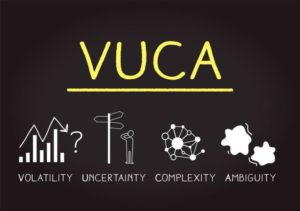 If your business is operating in a rapidly changing
If your business is operating in a rapidly changing 